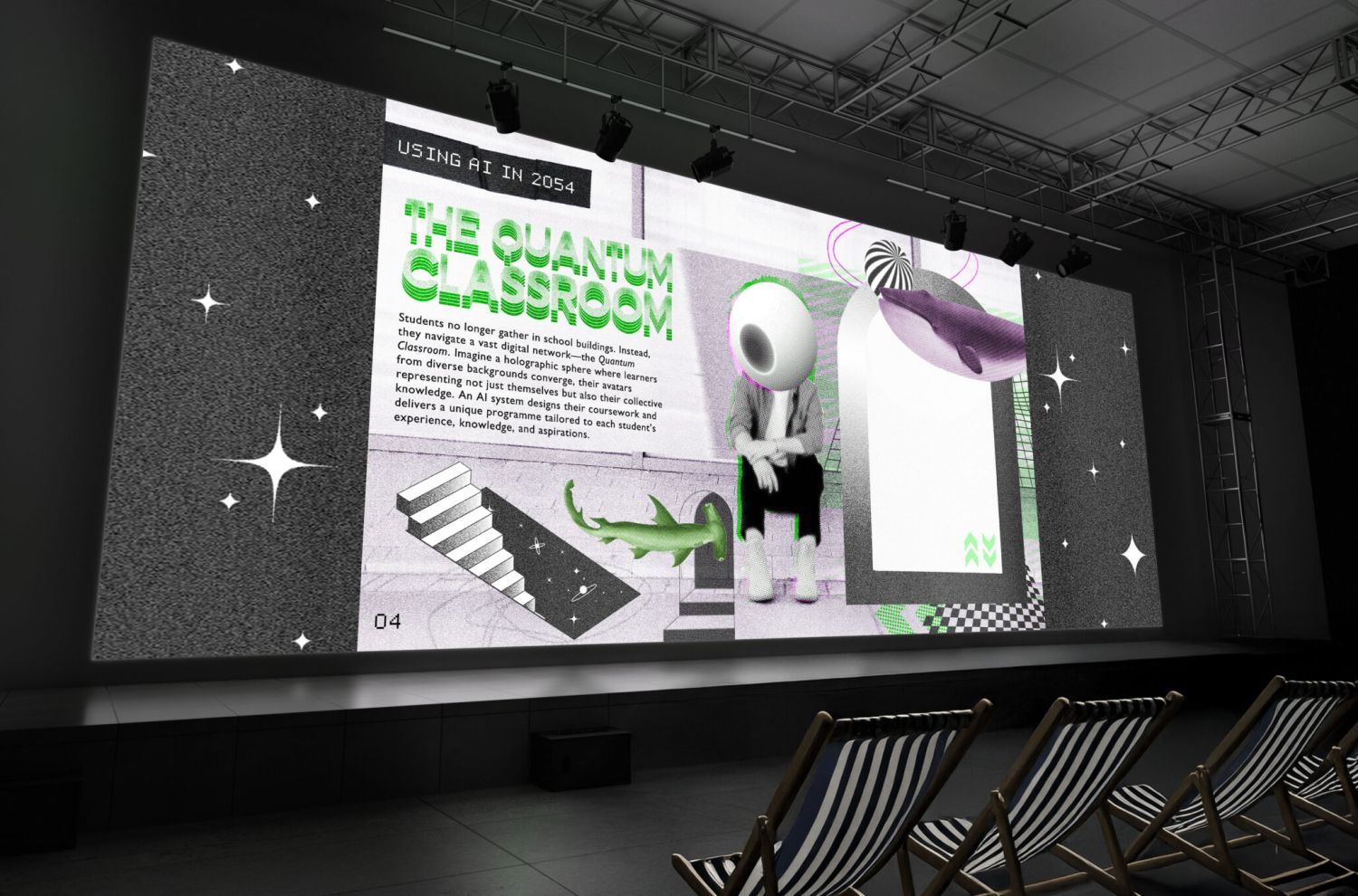
For the past 18 months, colleagues in the Centre for Research in Digital Education have been working across projects to address the rapid emergence of AI technologies in education by involving learners and teachers in speculative and futures-thinking activities, with the aim of co-creating spaces for creative and critical imagination about truly responsible use of AI in the schools.
As part of the project Towards embedding responsible AI in the school system: co-creation with young people in the BRAID programme (led by Professor Judy Robertson), Professor Jen Ross and Dr Cara Wilson, with Dr Harry Dyer and Professor Esther Priyadharshini at the University of East Anglia, organised artist-led workshops involving twenty-two learners at three secondary schools.
During the workshops, the young people engaged in a range of creative and future-orientated activities to identify key messages that they wanted to share with decision-makers and educators. These messages were brought together and published in the zine “What’s at Stake? Young People’s Take on AI & Education”.

The zine covers five areas that the young people identified as fundamental for the implementation of truly responsible use of AI for desirable futures in education (representation, personalisation, labour, educational value and cost, agency and rights). You can read more about these key areas and the workshop outputs on the Data Education in Schools website: read the article.
Jen, Judy and Cara built on this work in a second funded project, from the ESRC’s Impact Accelerator Account: AI futures for Scottish education. This project involved working closely with a group of secondary school teachers to adapt the creative futures methods and approaches from the BRAID workshops to create and pilot the “Imagining AI Futures for Education” resource for secondary schools. The resource has now been finalised and is free to download from the TRAILS.scot website, managed by the Data Education in Schools team and entirely devoted to AI literacy in schools. Copies will also soon be sent to all secondary schools in Scotland.

Designed for Levels 3 and 4 but adaptable for Level 5 too, the teaching resource introduces learners to the importance of critical imagination and creative expression in understanding welcome and unwelcome futures for AI in education.
The zine and the teaching resource have reached a wide range of teachers, pupils, education leaders and policymakers: during several sessions in the Scottish Parliament, hosted by Scotland’s Futures Forum and facilitated by project partners at Goodison Group in Scotland; when a pilot version of the resource was used with all S1 and S2 students at a secondary school during their 2025 AI week; and at a number of invited talks and sessions led by the project team for education stakeholders, researchers and others.
Educators and leaders are experiencing pressure to respond and adapt at pace to what is often presented as inevitable realities around AI technologies. This groundbreaking work brings futures methods and young people’s creative speculation into conversations about AI in Education, creating space and time for thinking more broadly and in the longer term about the nature and aims of education itself and for bringing the voices of young people into this conversation in a sustainable and meaningful way.
These projects took place at a time when children’s rights, young people’s voices, and the future of AI were being meaningfully engaged with by a range of other organisations in Scotland, for example the Children’s Parliament, Scottish AI Alliance and ADES. Collectively, this work offers guidance on the issues that will shape the coming years in education and will need to be thoughtfully addressed in order to pursue responsible and sustainable AI in and for education.
Based on the findings and approaches from these projects, we look forward to future research and engagement with more schools, young people, and colleagues in the edtech industry and in leadership settings.